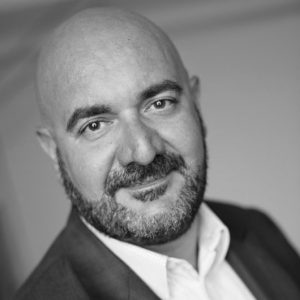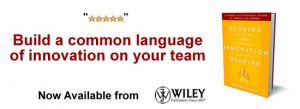The Emergence of the Blur
 Followers of technology, in consumer electronics, might remember that at the beginning of the new millennium, we observed a new trend named technological convergence: product/ categories barriers started intersecting and overlapping, while categories themselves – traditionally based on one functional aspect – stopped making sense from a consumer point of view. This technological trend culminated with the smartification of phones and TVs, the appearance of tablets, and the acceleration of the development of – long promised – connected homes.
Followers of technology, in consumer electronics, might remember that at the beginning of the new millennium, we observed a new trend named technological convergence: product/ categories barriers started intersecting and overlapping, while categories themselves – traditionally based on one functional aspect – stopped making sense from a consumer point of view. This technological trend culminated with the smartification of phones and TVs, the appearance of tablets, and the acceleration of the development of – long promised – connected homes.
From a technology point of view, we would have expected a revolution with fewer devices and less clutter, whereas now we have more displays that we could have ever imagined. Also we did not expect the large change in behavior implied by digitalization and smartification: a technological trend, ultimately translated into a social one. Round the clock connectivity, hyper-availability and multi/omni-channel apps are re-defining our lifestyle in ways we did not see coming. In a nutshell, the continuum between work and play, which were antagonists at the end of a spectrum, is obliterating due to technology, and their barriers are blurring. For example, and because of the computing power and connectivity of our smartphones and tablets, we could be working on holiday, while commuting, or from a bench at our children’s Sunday soccer match. By the same token, we have the ability of being connected with social media – and check our feeds and our walls – while in a boring meeting at work, playing while working.
On the same parallel path, more and more offices are replacing meeting rooms to offer spaces whose objective is to let employees socialize and relax. More and more of our houses, the traditional sanctuary of our relaxation, are being built with an office space, for remote work. There is even an emerging new breed of workers, so called digital nomads, who migrate from location to location, in a bourgeoisie homeless fashion, and work remotely thanks to technology, regardless of their current location.
We refer to this social trend – derivative of technological convergence – as “The Blurâ€: an emerging lifestyle where the boundaries between work and life are totally blurred. But why is this so important? Much of our understanding of consumers, and therefore marketing to them and developing innovation with, and for them, is based on dissecting consumers’ life in intervals with a clear beginning and a clear ending: these intervals – known as occasions – are important to define the constraints and the idea fertility of the consumers’ space: commuting, working, work meeting, relaxing, unwinding, happy hour, night out, night in, … As important as the occasions, are the transitions between them: for example the powerful moment where consumers leave the office, to enter the world of leisure, sport and entertainment. Of course both occasions and transitions, cease to play the same role they traditionally had, because of the Blur: consumers’ behavior becomes less clear, marketplaces less predictable, and traditional engagement rules make no sense any longer.
To understand how far the Blur is changing the fields of branding and innovation, suffice to list some of the effects of the phenomenon itself: a typical example is chain restaurants launching whole day breakfast menus, which replace the traditional occasion association with the morning window. By the same token, brunches are not only a family “occasion†any longer, and they now include more and more beer and cocktails. On the luxury side, a good “Blur†example, is the 24/7 connectivity of luxury boutique sales staff with wealthy customers: in jewelry and super-premium watches, more and more transactions are closed outside shop opening hours, with staff and customers interacting on social media. The Blur is also shortening consumers’ attention span, and the TV Entertainment industry is adapting and reducing the average length of an episode, which moved from the 45 minutes (to which the broadcasters added 15 minutes of commercials to reach the one hour span) up to 30 minutes, if not less, on streaming.
Similar examples could be provided in retail – with the emergence of hybrid digital/physical channels – and in hotel and lodging industries, where the traditional business vs. leisure categorization is failing, and we are observing more and more hybrid solutions, such as urban resorts.
The effects of the Blur depend on the industry and very often there are local geographical and cultural nuances. But in general two conclusions can be inferred cross the border: first and foremost, brands need to work on a relevant strategic architecture, beyond the tactical social media centric, traffic-building, promotional activity. Brands risk extinction by algorithms – which are emerging in the form of AI based virtual assistants – If they fail in becoming more and more relevant to their target consumers: in a nutshell they need to be less tactical, e.g., news cycle piggy-backing promotions (e.g., less cats on social media) and need to kick off more strategic platforms to co-create with consumers, in a true Socratic dialogue.
The second cross-industry learning from the emergence of the Blur is related to innovation: less product, feature centric initiatives, and far more ecosystem, experience related innovations, in a similar fashion to what Louis Vuitton did in entering the smart watch industry: the French house did not focus on the technical aspects, rather developed a consumer-centric set of experiences (digital and non) for the discerning and wealthy customers of their smart watches. In conclusion, the Blur is a pervasive social phenomenon, which is changing the way we build brands and innovate: and the message to the brand owners and innovators is rather simple. Traditional frameworks and product specific benefits might as well speak to the end of your businesses.
Source: Bevolo, M.; Amati, F.; “Premium beyond Digitalâ€
Wait! Before you go…
Choose how you want the latest innovation content delivered to you:
- Daily — RSS Feed — Email — Twitter — Facebook — Linkedin Today
- Weekly — Email Newsletter — Free Magazine — Linkedin Group
 Filiberto Amati worked for 15 years in various international firms (e.g. P&G, Philips, Campari and Auberon Growth Consultants) before founding Amati and Associates an international growth advisory boutique based in Warsaw, Poland. Filiberto assists his clients in challenges related to branding, innovation and international expansion. He tweets from @filibertoamati.
Filiberto Amati worked for 15 years in various international firms (e.g. P&G, Philips, Campari and Auberon Growth Consultants) before founding Amati and Associates an international growth advisory boutique based in Warsaw, Poland. Filiberto assists his clients in challenges related to branding, innovation and international expansion. He tweets from @filibertoamati.
NEVER MISS ANOTHER NEWSLETTER!
LATEST BLOGS
Will the iPhone Come to T-Mobile?
Lost in the noise this week was an announcement of a settlement in a legal dispute in which Sprint agreed…
Read MoreHow Charity could help spread Innovation
Every once in a while innovations come along that offer profitable opportunities for the inventors and business minds that turn…
Read More



